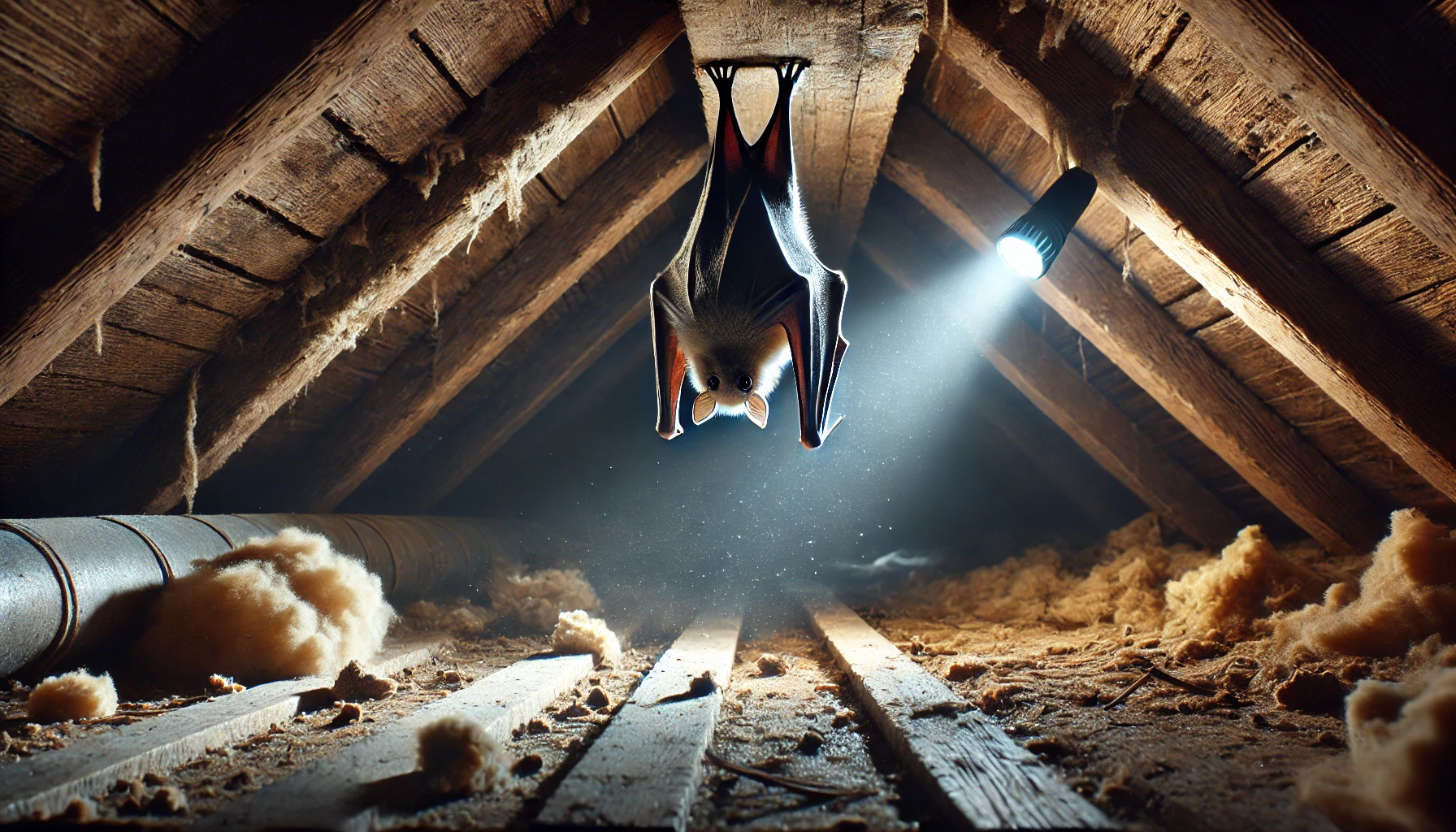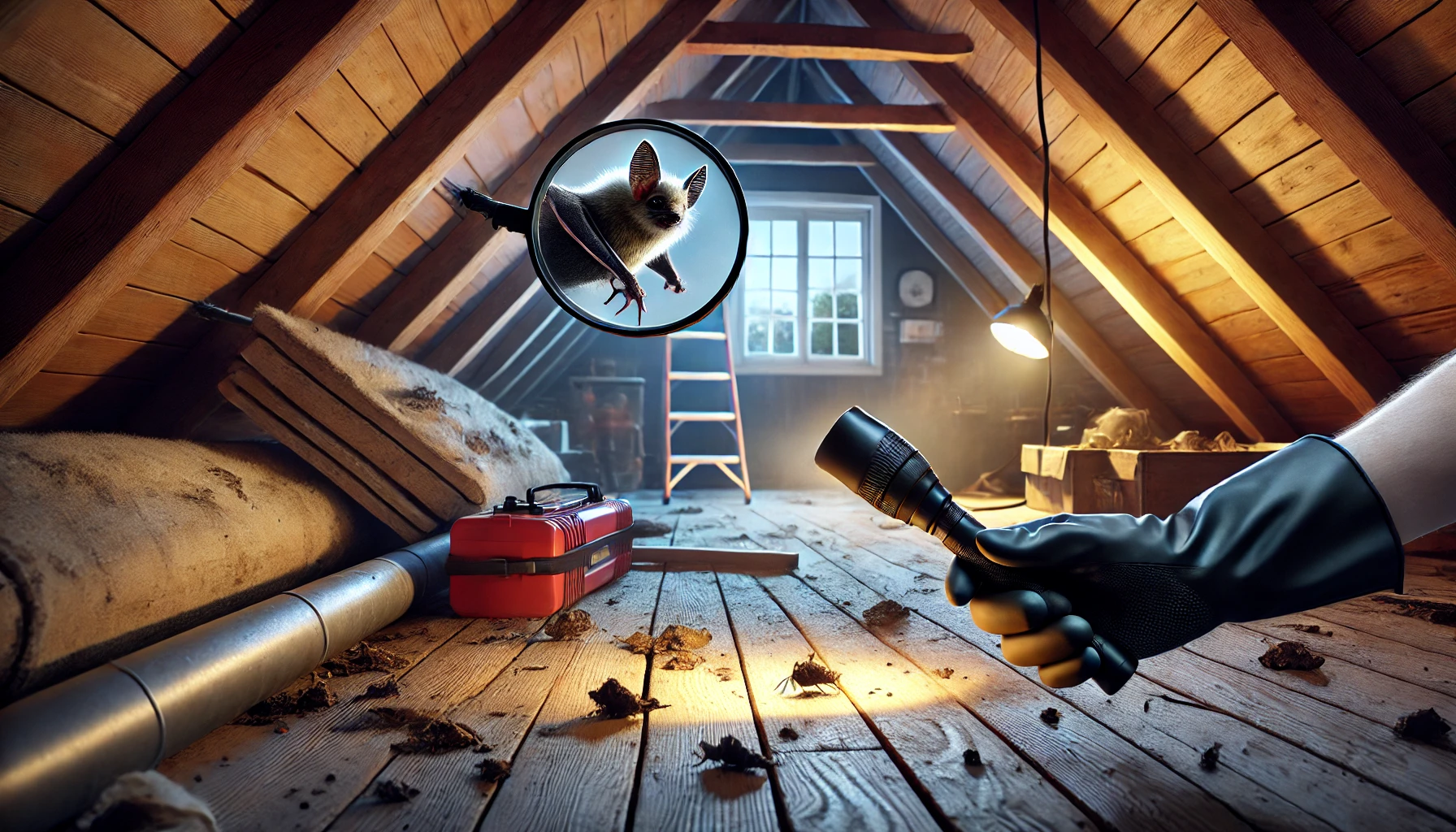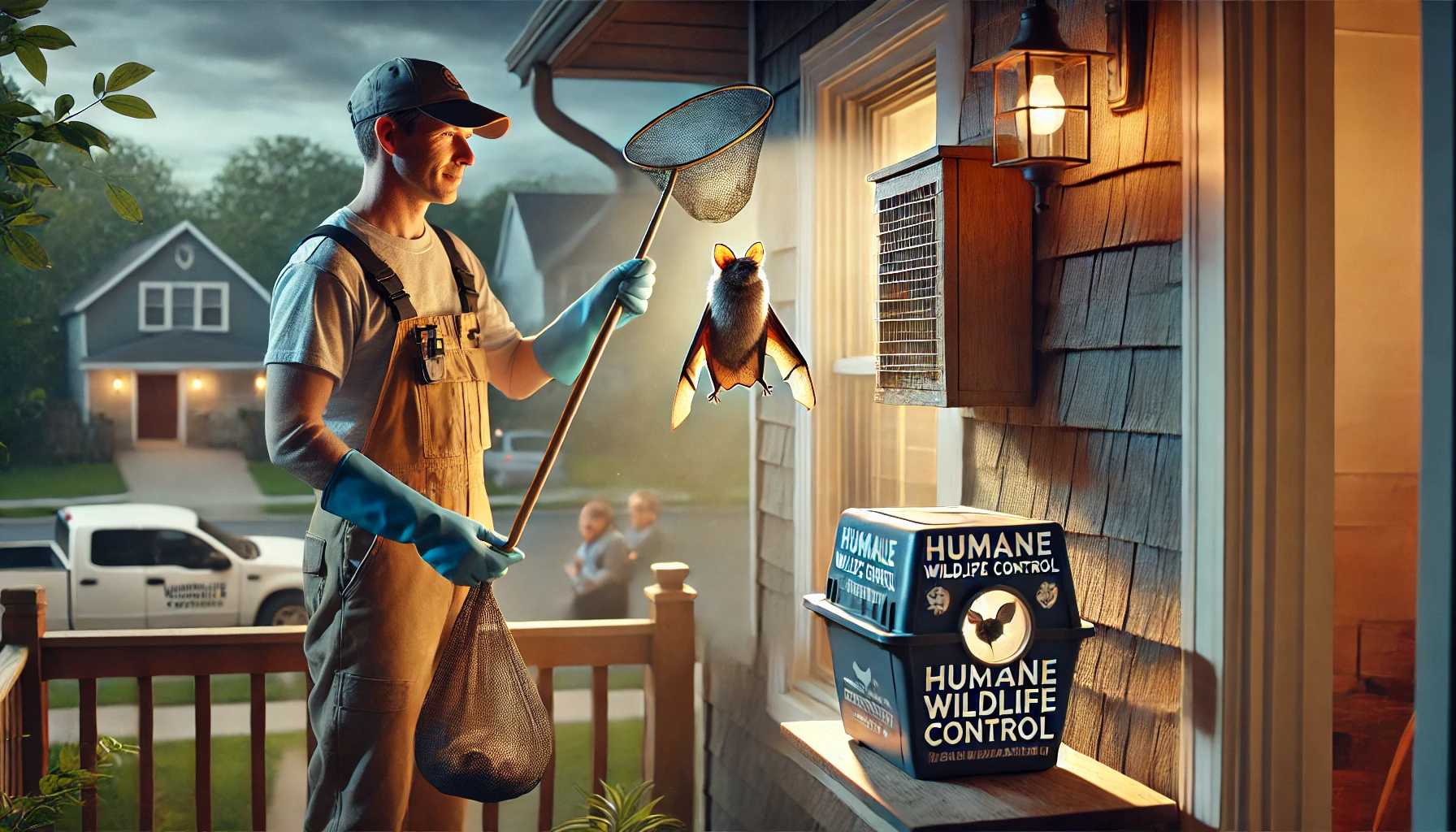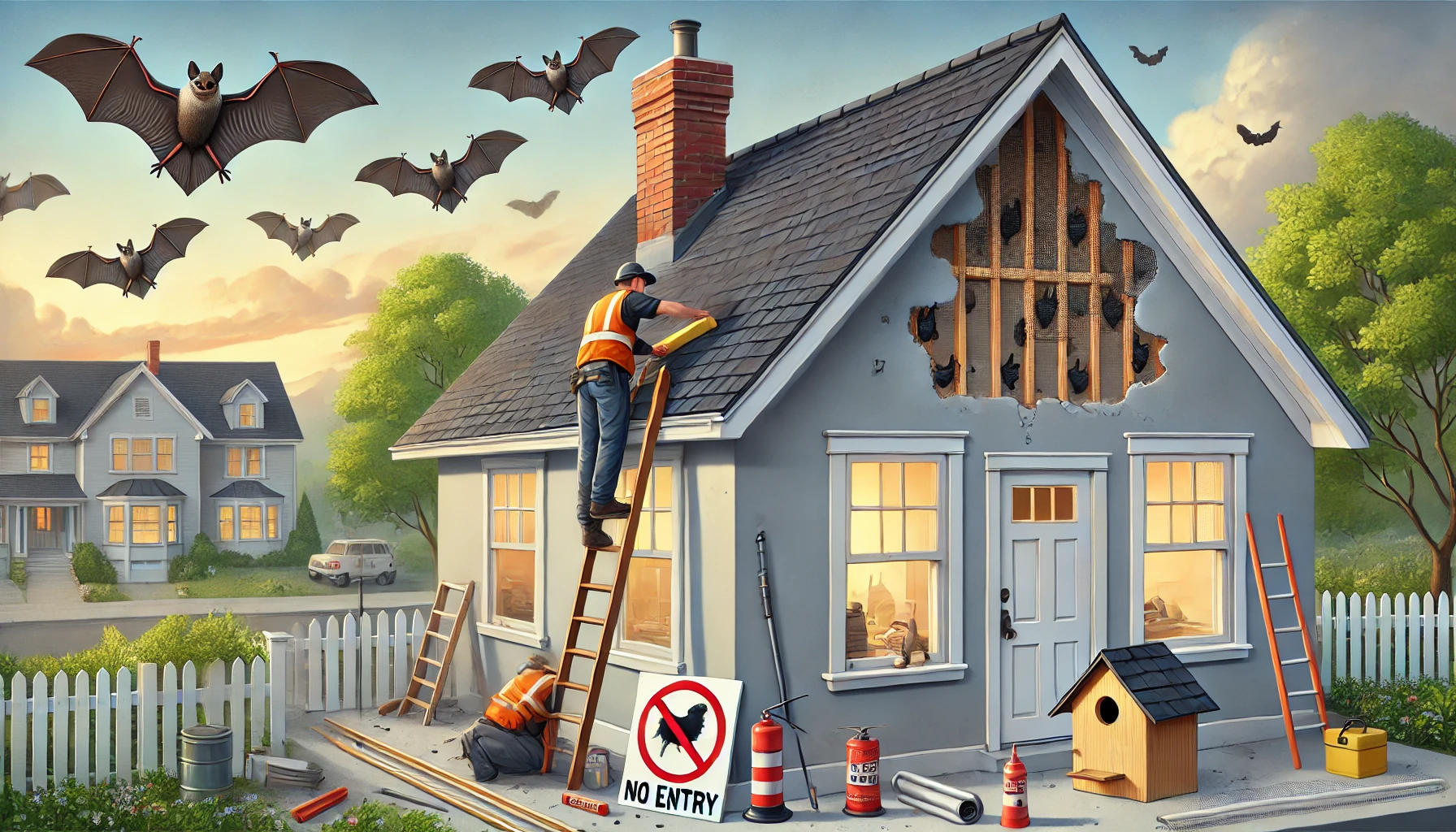Key Takeaways
- Identify bat infestations early by looking for guano, strange noises, and visual signs.
- Understand health risks such as rabies and histoplasmosis associated with bat infestations.
- Use humane exclusion devices for safe and effective removal.
- Always seal entry points thoroughly after bats exit.
- Regular maintenance, preventive measures, and professional assistance can help manage and prevent future infestations.
 Finding bats in your attic may be a disturbing experience. Beyond unstable noise and pungent odor, bats present actual health risk and potential property damage. Because many bat species are protected under state and federal laws, it is important to carefully remove their removal, humanly and legally.
This detailed guide tells us how bats enter homes, identify signs of an infection, provide ways to remove humanitarian removal, and provide practical suggestions to prevent future events.
Finding bats in your attic may be a disturbing experience. Beyond unstable noise and pungent odor, bats present actual health risk and potential property damage. Because many bat species are protected under state and federal laws, it is important to carefully remove their removal, humanly and legally.
This detailed guide tells us how bats enter homes, identify signs of an infection, provide ways to remove humanitarian removal, and provide practical suggestions to prevent future events.
Understanding Why Bats Choose Your Attic
Bats often select attics because these spaces offer the perfect environment for nesting, raising offspring, and sheltering from harsh weather and predators. Attics are typically dark, warm, undisturbed areas closely mimicking bats’ natural roosting spots. Unlike other pests, bats do not create entry points by chewing or scratching. Instead, they take advantage of gaps, cracks, and holes—some as tiny as half an inch wide—found along rooflines, eaves, vents, and chimneys.

Not getting a solution?
Get your free pest control estimate today!How to Identify a Bat Infestation
- Early identification is critical for effectively addressing a bat infestation. Some of the most common indicators include:
-
Bat Droppings (Guano): Dark, crumbly droppings that accumulate under roosting spots or near entry points are one of the most obvious signs of bat presence.
-
Strange Noises: Bats make high-pitched chirping and scratching sounds, particularly around dusk and dawn when they leave or return to their roost.
-
Visual Sightings: Seeing bats flying around your house or exiting at sunset often indicates an active infestation.
-
Grease Marks: Oily smudges near holes or crevices suggest regular bat activity as their fur oils rub off onto surfaces.
-
Strong Ammonia Smell: A strong ammonia-like odor from guano and urine often signals a significant bat infestation.
Health and Safety Concerns Associated with Bats
- While bats naturally help control insects, their presence inside your home poses serious health and structural risks:
-
Rabies: Bats are known carriers of rabies. Avoid direct contact, and seek immediate medical help if bitten.
-
Histoplasmosis: Bat droppings can carry fungal spores that cause respiratory illness, especially dangerous for those with compromised immune systems.
-
Structural Damage: Accumulated guano can degrade insulation, weaken ceilings, and damage the structure of your home, leading to costly repairs.
Safe and Humane Methods for Removing Bats
 Step 1: Thorough Inspection
Start with external inspection of your home, target the normal bat entry points such as Eves, vents, roofline and chimney. Recognize and document all the opening, even those who are half an inch small. Detailed inspections ensure that all access points are found and are properly addressed.
Step 2: Choose the Right Time
The ideal period for bat exclusion is late summer to early fall. Avoid exclusion during maternity season (typically May through August) when flightless young depend on adult bats. Conducting exclusion during this time can result in trapped and dying pups, creating ethical, legal, and sanitation issues.
Step 1: Thorough Inspection
Start with external inspection of your home, target the normal bat entry points such as Eves, vents, roofline and chimney. Recognize and document all the opening, even those who are half an inch small. Detailed inspections ensure that all access points are found and are properly addressed.
Step 2: Choose the Right Time
The ideal period for bat exclusion is late summer to early fall. Avoid exclusion during maternity season (typically May through August) when flightless young depend on adult bats. Conducting exclusion during this time can result in trapped and dying pups, creating ethical, legal, and sanitation issues.
Step 3: Installing Exclusion Devices
- Install humane one-way exclusion devices at identified entry points. These specialized tools allow bats to exit safely without allowing re-entry. Popular devices include:
-
Bat Cones: Simple plastic tubes that allow bats to leave but prevent their return. Easy to install over identified entry points.
-
Bat Valves: Commercially available, specifically designed devices for humane bat exclusion, allowing bats to exit without re-entering.
-
Netting: Fine mesh netting that is installed loosely over openings, permitting bats to exit but blocking re-entry.
-
Installation Timing: Install exclusion devices during daylight hours to ensure bats naturally exit at dusk, avoiding accidental trapping.
- Wear protective clothing, including gloves, masks, and goggles.
- Lightly spray droppings with a water and bleach mixture to reduce airborne spores.
- Carefully remove contaminated insulation and thoroughly disinfect affected surfaces.
- Properly ventilate the attic area to eliminate lingering odors and spores.
Preventing Future Infestations
- After successfully handling a bat infestation, take proactive steps to deter future incidents:
-
Regular Home Inspections: Conduct annual assessments of your home’s exterior, checking for and addressing any new gaps or openings.
-
Secure Openings: Repair any discovered openings immediately using bat-proof materials like steel wool or caulk.
-
Install Caps and Screens: Protect chimneys and vents with metal mesh covers or caps to block bat entry.
-
Use Exterior Lighting Strategically: Motion-activated outdoor lights can deter bats from approaching potential entry points.
-
Provide Alternative Roosts: Install bat houses in your yard to offer bats a safe, attractive alternative habitat away from your home.

When to Call a Professional
- While minor bat infestations can be managed with DIY approaches, there are times when professional intervention is recommended:
-
Large Colonies: For larger infestations, professionals have the tools and expertise to handle exclusion and cleanup effectively.
-
Difficult Access: If bats are accessing hard-to-reach areas, professionals use specialized equipment to safely remove them.
-
Health Concerns: Professionals are trained to handle health risks associated with bats, including diseases like rabies and histoplasmosis.
Visit our Species, Control, and DIY Guide sections for additional resources on bats and ways to tackle a bats infestation.





